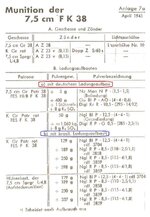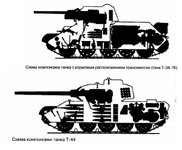We've criticized the British and French enough in the latest threads, lets criticize the Germans now  As well as suggest the different paths in the development of the armored stuff for their army, say, from 1935 on.
As well as suggest the different paths in the development of the armored stuff for their army, say, from 1935 on.
Fair game are: reduction (or increase?) of the AFV/tank main designs, different guns, engines, layouts of the tanks. Guns - from the MGs and auto-cannons to the really big pieces. Engines - gasoline or diesel, inline, radial or V, 4 to 12 cylinders.
To start in a modest fashion: the 'waffentraeger' and light tank based on the long Pz-II, ie. the hull of similar outward dimensions to the self-propelled 15cm gun. Extra space can be used for the 7.5 or 10.5cm ammo, better suited for installation of a good AA gun.
Fair game are: reduction (or increase?) of the AFV/tank main designs, different guns, engines, layouts of the tanks. Guns - from the MGs and auto-cannons to the really big pieces. Engines - gasoline or diesel, inline, radial or V, 4 to 12 cylinders.
To start in a modest fashion: the 'waffentraeger' and light tank based on the long Pz-II, ie. the hull of similar outward dimensions to the self-propelled 15cm gun. Extra space can be used for the 7.5 or 10.5cm ammo, better suited for installation of a good AA gun.



